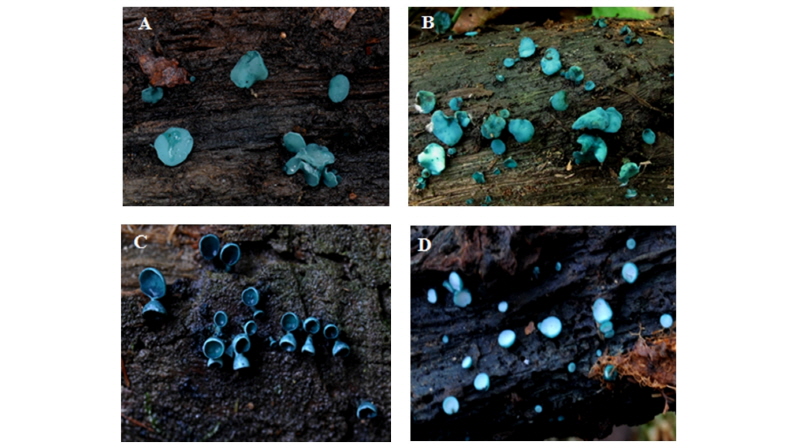Abstract
Members of Chlorociboria are soft-rot ascomycetes that produce blue-green pigment. We investigated the growth characteristics of two Korean species of Chlorociboria, eight strains of Chlorociboria aeruginascens and Chlorociboria poutoensis, under various culture conditions (solid media, temperature, pH) and screened them for extracellular enzyme activity. Although the growth rate was slow, all tested strains of Chlorociboria spp. grew well on potato dextrose agar (PDA; 16.3~42.6 mm after 60 days) or Sabouraud dextrose agar (SDA), but not on malt extract agar (MEA). Compared with C. aeruginascens strains, C. poutoensis strains exhibited higher expression of blue-green pigments on both PDA and SDA media. The optimal temperature for mycelial growth was 20~25°C, and mycelial growth was lower at 30°C than at 10°C. All strains tended to have increased mycelial growth as the incubation temperature increased in the range of 10 to 20°C. The optimal pH of potato dextrose broth (PDB) for mycelial growth varied according to the strain under static culture conditions. Maximum biomass production was obtained at pH 6.0 for NIFoS 579 (114.3 ± 5.1 mg/60 days), but it maintained a stable pigment expression under a broad pH spectrum. The activities of both cellulase and laccase were observed in all tested strains of Chlorociboria spp. Enzyme activities of NIFoS 579 were remarkably higher than those of the other strains. From these results, we suggest that C. poutoensis NIFoS 579 is a potential candidate for use as a source of natural blue-green dye.
Acknowledgements
This study was supported by a grant (FP 0801-2010-01-2018) from the National Institute of Forest Science, Republic of Korea.
Figures & Tables

Fig. 1. Blue-green ascocarps of Chlorociboria aeruginascens (A~C) and Chlorociboria poutoensis (D) developed on the surface of decayed wood. A, NIFoS 1908; B, NIFoS 2007; C, NIFoS 2298; D, NIFoS 2295; NIFoS, National Institute of Forest Science.


